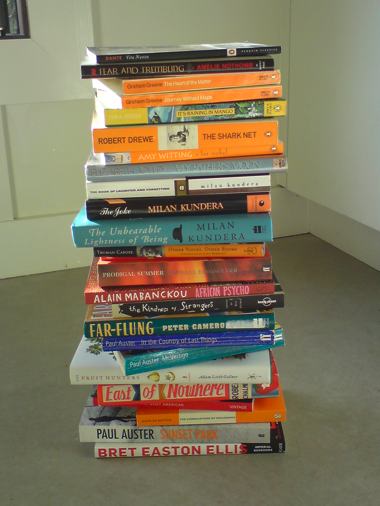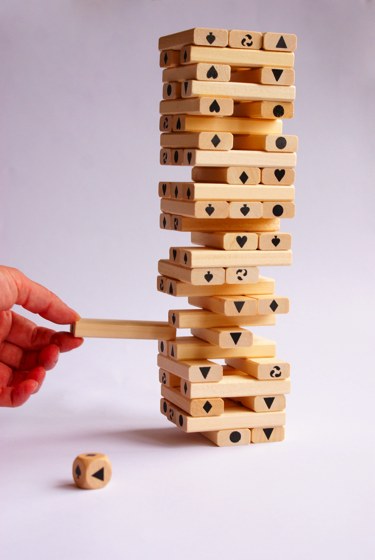This post is by Karol K. of newInternetOrder.com.
We all need a little relaxation every day, just to keep our productivity at high levels. There’s no productivity without relaxation. No one is superhuman enough to be able to keep going 24/7 like a Duracell bunny.
But is there a possibility we’re getting the whole idea of relaxation wrong?
I can’t remember where I got this concept from, but there are basically three main areas we operate in: physical, intellectual, and emotional.
No matter what work or activity we’re engaged in at any moment, it always falls into one of these three categories.
So what’s the problem with relaxation?
“Default” relaxation
Most of us have a “favorite” way of relaxing—a favorite activity, for example. This becomes our go-to relaxation activity by default, no matter what we were doing just a minute before.
Unfortunately, sometimes this activity isn’t relaxing at all. I’m sure you experience that feeling from time to time. Let’s say that you love to read, like many people do. And you use it as your main way of relaxing whenever you feel like you need a moment off.
But there are times when you just can’t seem to enjoy it as much as usual. Times when each page isn’t that easily consumed. Times when you can’t even focus on what you’re reading, and you have to re-read each sentence a couple of times.
Does it mean that it’s not a good day for reading? No way. There’s no such thing as a bad day for reading. So what’s the problem, then?
Why your default relaxation activity doesn’t work
The reason why your favorite relaxation activity may not work today lies with the activity you were doing prior to having a moment off.
As I said, there are three main areas we operate in: physical, intellectual, and emotional, no matter what we do. And the thing is that we can’t work and then relax within the same area.
Let me give you an example. Let’s say you’re a web designer, and you’ve just finished working on a new website, or at least you’re reached a milestone and you want to relax for a minute. So you think “I know, I’ll check what’s going on on my favorite design blogs.” This isn’t relaxing.
You can’t relax that way because you’re forcing yourself to keep operating in the same area. Designing costs you a lot of intellectual effort, and now, instead of switching to another area, you’re continuing to put your intellectual self to work by forcing your mind to consume new articles about design.
Physical exercises may be an even better example here. If you’ve just finished your workout at the gym, you’re not going to “relax” by running back home. This makes no sense, right?
So the main question is: how can you truly relax?
True relaxation is simple
To truly relax, simply switch to another area of activity.
If you’ve been using your creative, intellectual mind for the last hour or two, the only way to relax now is to either do a physical activity of some sort (like working out), or some emotional activity, so to speak.
In most cases “emotional” means “social.” So meeting your friends for a beer falls beautifully within this area. Basically, emotional activities are everything that don’t require you to think (intellectually), and don’t involve any type of physical activity.
If you’ve been working out for the last two hours, then reading a book is probably a great way to relax. If you’ve been writing an article, you might relax by playing with your dog. And so on.
On the other hand, if you’ve been writing an article then reading an article about writing isn’t relaxation. If you’ve just finished painting your house, hitting the gym isn’t relaxation.
Here’s an interesting example. Contrary to what you might think, if you’ve been in a fight with your partner then meeting your friends afterwards isn’t relaxing in most cases. What is relaxing though is working out or working intellectually, perhaps at your job.
The simple rule of thumb is: whatever you do, always notice which area you’re operating in, then switch to another area for relaxation. Give your body (or your mind) a little time off.
How long does it take to relax?
Interestingly, if you take this approach, relaxation happens rather quickly. But you have to witch areas often.
You shouldn’t ever be operating in a single area for more than two hours without a break. And I mean it. If you’re doing the same thing for eight hours, it will take you what remains of your day to relax. This isn’t efficient at all.
I’ve found that the most effective thing for me to do is to work for one hour, and then take a ten-minute break (shifting to another area of activity). After that I resume work, and repeat the process.
By using such an approach, I can easily “work” for many hours without any sign of being tired. It doesn’t even feel like working. But that’s just my story … your mileage may vary.
Anyway, give it a shot. Just try to work for one hour, and then take a ten-minute break, switching to another area. Finally, get back to work again. Do it for one week and see if it doesn’t improve your productivity and your levels of relaxation.
Once you’re done with this experiment don’t forget to come back and share your opinion about this whole idea. Is it working for you like it is for me?
Karol K. (@carlosinho) is a 20-something year old writer and web 2.0 entrepreneur from Poland, and a grad student at the Silesian University of Technology. He shares his thoughts at newInternetOrder.com. Tune in to get his Getting Things Done (GTD) tips and other personal productivity advice.














Recent Comments